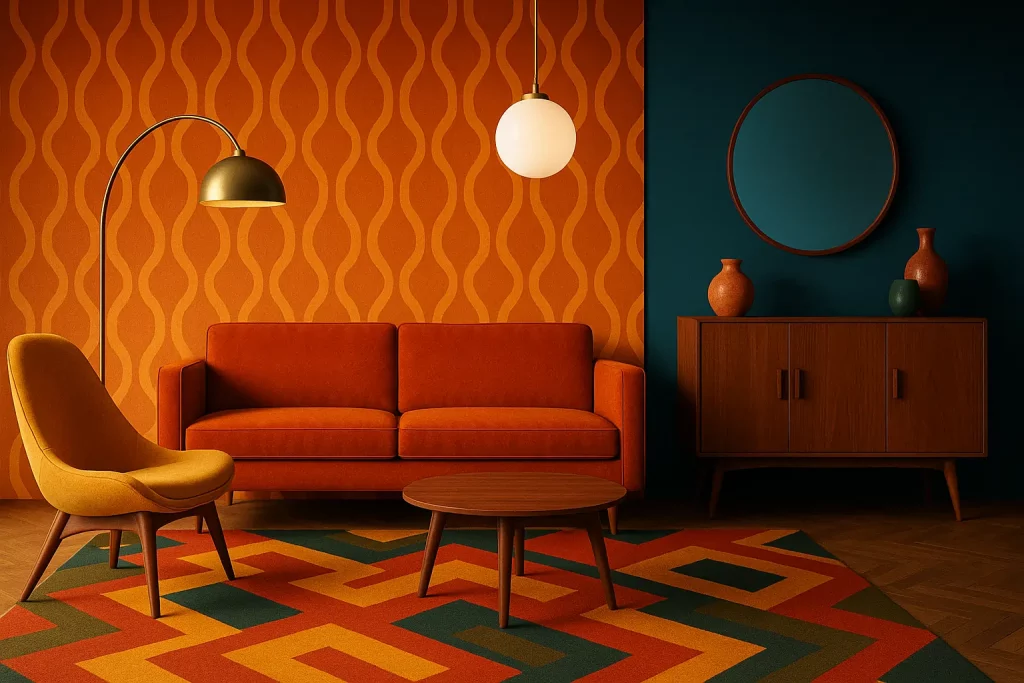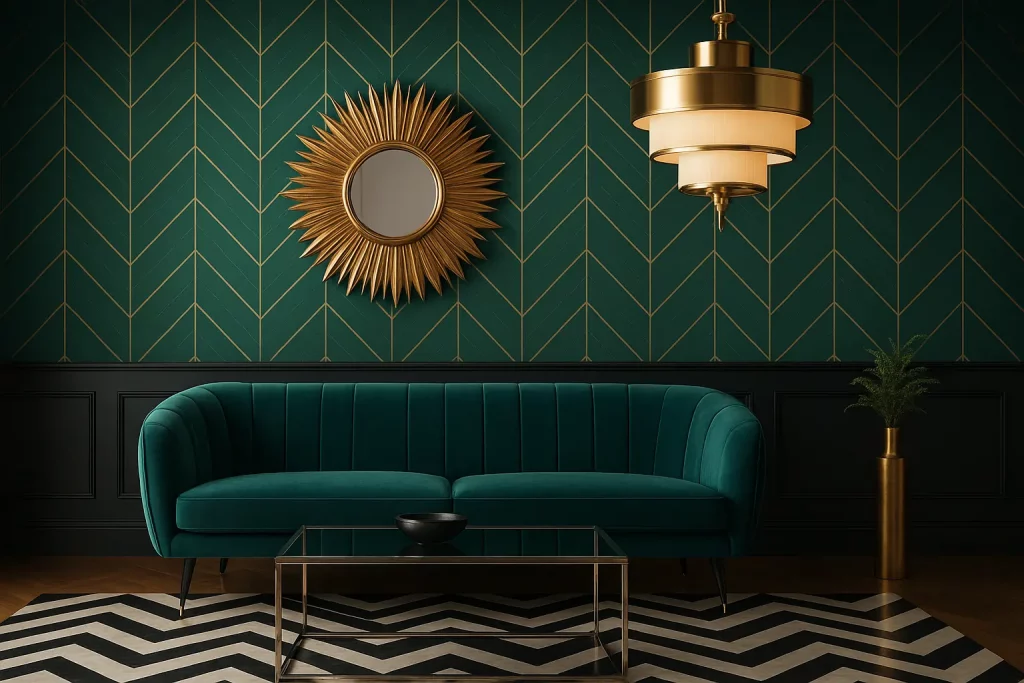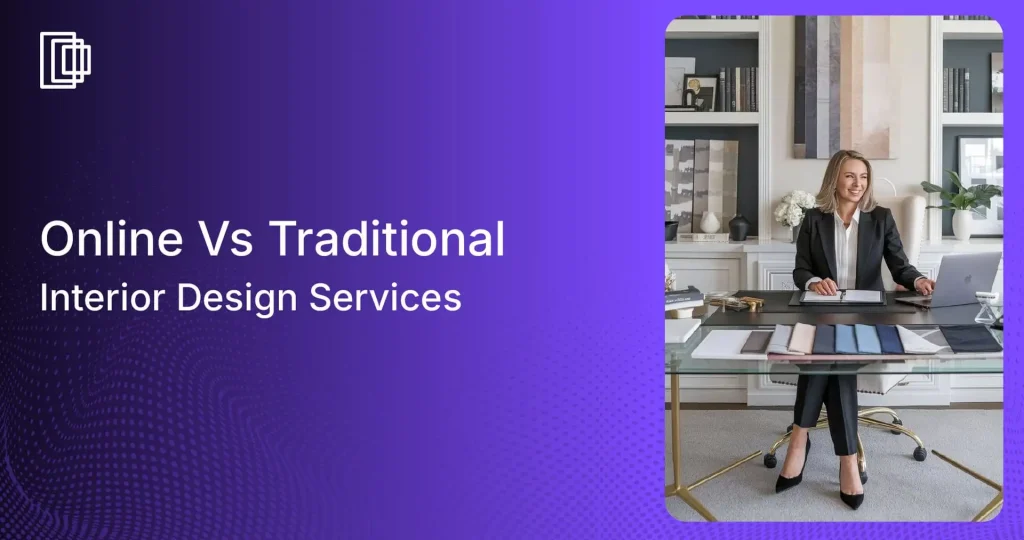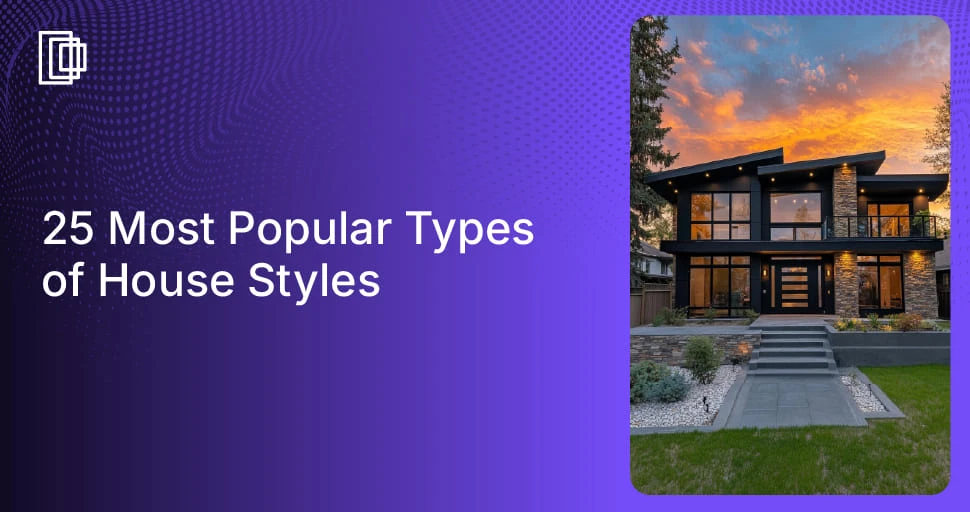The industrial interior design style is recognized for its raw, distinctive aesthetic, inspired by urban lofts and repurposed warehouses. Its appeal originates from utilitarian principles, which focus on transforming historic, functional buildings into stylish homes that are rich in character.
This design approach emphasizes raw materials and exposes structural elements often concealed in conventional design. Key features include exposed brick, visible ductwork, and a blend of aged wood and metal, all arranged within spacious, functional layouts.
This guide provides a collection of modern industrial interior design ideas to assist in achieving this aesthetic. It offers actionable strategies and detailed inspiration for transforming a living space with the style’s signature urban sophistication and functional elegance.
Read also – 21 Most Popular Types of Interior Design Styles
What is Industrial Interior Design?
Industrial interior design is an aesthetic trend that takes cues from old factories, warehouses, and industrial structures. The style emphasizes showing off elements that other designs might try to conceal, such as exposed brickwork, ductwork, and pipes. It is defined by a mix of raw and rustic textures, neutral colors, and a focus on open, uncluttered spaces, creating a look that is both edgy and inviting.
Origins and History of Industrial Interior Design
The roots of industrial interior design can be traced back to the mid-20th century when the repurposing of old factories and warehouses into living spaces gained popularity due to rising urbanization and industrial evolution. Designers began to appreciate the raw, utilitarian beauty of these converted structures, leading to the incorporation of industrial elements as aesthetic components in interior design.
The trend evolved to feature exposed beams, metal surfaces, and untouched brick walls, highlighting both functionality and an inherent aesthetic appeal. Industrial modern interior design celebrates the building’s history through elements like open plans, lofts, and high ceilings, which often showcase raw materials such as visible pipework and concrete floors.
The modern industrial interior design ideas not only emphasize aesthetic beauty but also promote sustainable practices by transforming industrial areas into livable spaces, thereby reducing material footprints.
Read also – 15 Ways To Add French Country Interior Design Style To Your Home
Characteristics of Industrial Interior Design
While the industrial aesthetic may appear simple, its impact is achieved through defining principles. These characteristics are central to modern industrial interior design ideas creating a look that is both functional and visually compelling.
- Exposed Architectural Elements: A fundamental principle of industrial interior design is celebrating the building’s structural framework. The design intentionally highlights features like exposed brick walls, visible metal beams, ductwork, and pipes instead of concealing them.
- Raw and Repurposed Materials: The industrial modern interior design style relies heavily on robust, unfinished materials. Foundational elements include reclaimed wood with natural grains, polished or raw concrete surfaces, and a variety of metals like steel and iron.
- Neutral Color Palette: Many industrial interior design ideas are dominated by neutral and earthy tones to create a cohesive, minimalist feel. Shades of gray, black, white, and brown form the foundational base for this aesthetic.
- Minimalist, Functional Furniture: Furniture is selected for its functionality and clean, simple lines, avoiding ornate decoration. Pieces often feature a combination of wood and metal, emphasizing utility and a minimalist form that complements the raw space.
- Open, Spacious Layouts: Drawing industrial interior design inspiration from factory lofts, this style thrives on open-concept floor plans. These large, unobstructed spaces create an airy atmosphere, with an emphasis on minimalism and avoiding clutter.
- Large Windows and Natural Light: Maximizing natural light is a crucial component of industrial style interior design ideas. Expansive, grid-patterned windows are a defining feature, enhancing the sense of openness and illuminating the raw textures within.
- Statement Lighting: Lighting serves as both a functional necessity and a key design accent in industrial spaces. Popular choices often include vintage Edison bulbs, oversized metal pendant lights, and minimalist floor lamps that underscore the theme.
Read also – 20 Top Interior Color Schemes for Your House Design
14 Best Industrial Interior Design Ideas
We have enlisted the help of the following few tips and pointers for you to get this edgy, fun style correct on your first try! These are the 14 of the best modern, industrial interior design ideas.
1. Embrace a Muted and Neutral Palette
The foundation of industrial interior design is a muted, neutral palette. Using shades of gray, black, and brown creates a grounded atmosphere where raw materials can stand out. The absence of bold color allows textures like brick and metal to become the focus, establishing a sophisticated visual language.
To implement this, use a base of charcoal gray or warm brown. Accents can be introduced through black metal finishes and lighter textiles. This minimalist scheme is central to many industrial interior design ideas, enhancing space while ensuring architectural features are the primary focus of the room.
Read also – Top 20 Neutral Paint Colors
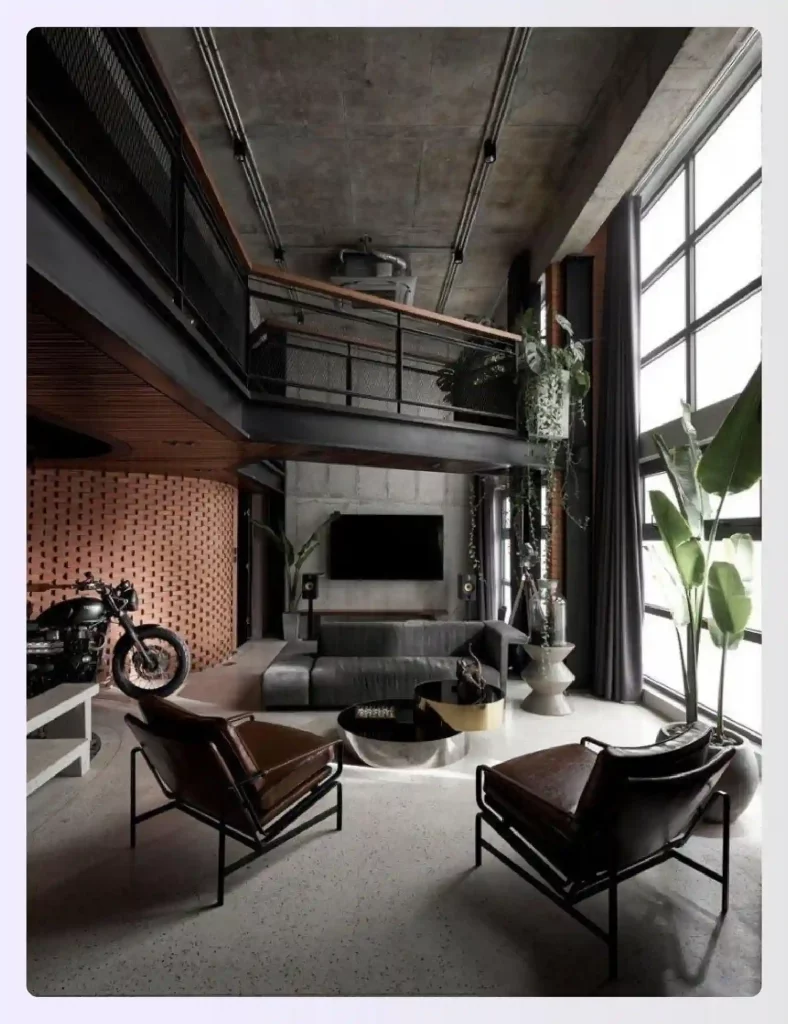
Image Credit: designboom.com
2. Combine Modern Elements with Rustic Charm
A key characteristic ofindustrial modern interior design is blending rustic and contemporary elements. This juxtaposition creates a dynamic aesthetic where the rawness of historic architecture is balanced by the clean lines of modern furnishings. Placing a sleek, minimalist sofa against a weathered, exposed brick wall is a classic example.
This approach allows for a highly personalized space. You can achieve this by pairing a reclaimed wood coffee table with modern metallic chairs or hanging abstract art on a concrete surface. This blend provides endlessindustrial interior design inspiration, resulting in a space with depth and character.
Read also – 11 Modern Rustic Interior Design Ideas For Your Home
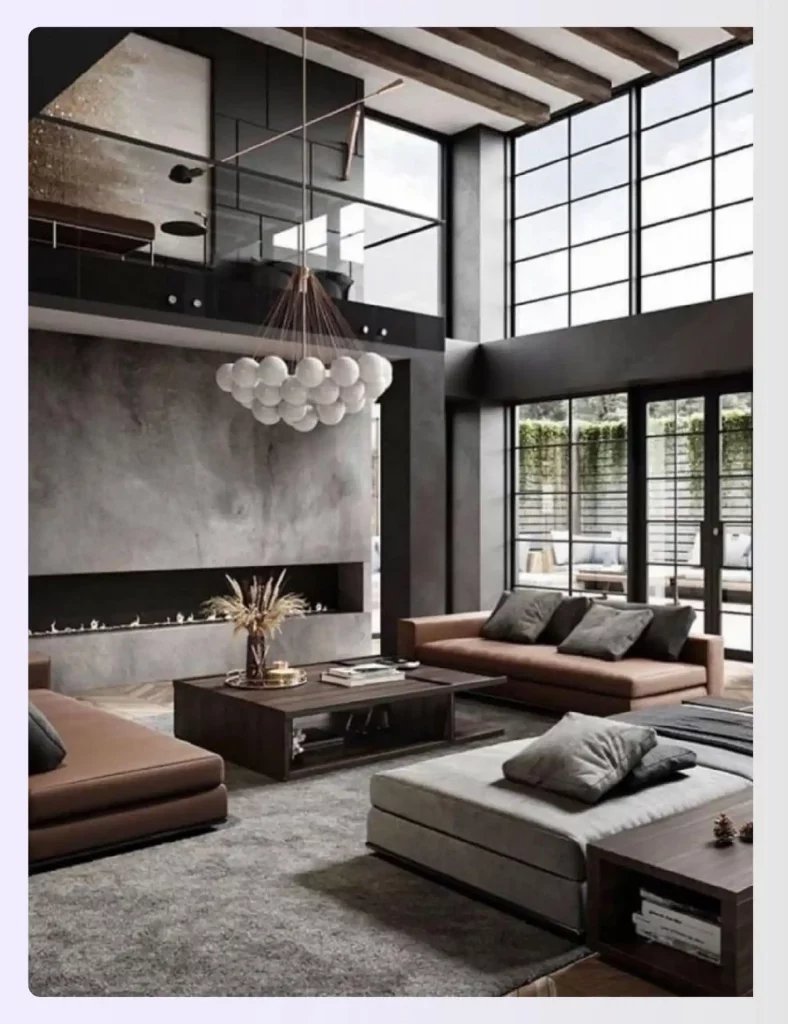
Image Credit: bocadolobo.com
3. Maximize Space with an Open-Concept Layout
Inspired by its origins in warehouses, industrial design favors open-concept layouts to create an authentic sense of spaciousness. Removing interior walls allows for an unobstructed flow between living areas, which enhances natural light and fosters a communal atmosphere. This approach is fundamental to achieving the style’s expansive feel.
To manage a large, open space, use furniture to define distinct zones without physical barriers. For instance, a large area rug can anchor a living room, while pendant lights can delineate a dining area. This strategic zoning is essential for successful modern industrial interior design ideas.
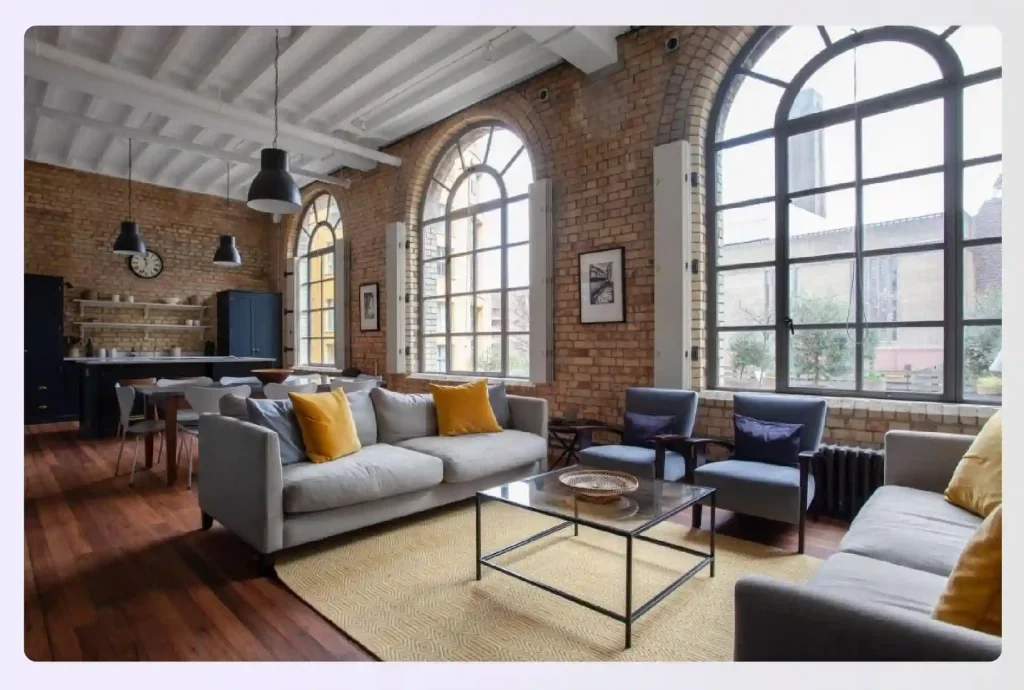
Image Credit: wsj.com
4. Illuminate Your Space with Unique Lighting Fixtures
In industrial design, lighting fixtures are central decorative elements that define a space’s character. Selections often feature raw materials like dark metal, brass, and exposed wiring. Popular choices include large, low-hanging metal pendants, minimalist floor lamps with Edison bulbs, and track lighting systems that highlight architectural features.
These fixtures reinforce the utilitarian, factory-inspired theme. When planning your lighting, consider layering different types to create both ambiance and task-specific illumination. This focus on statement lighting is one of the most impactful industrial style interior design ideas, adding a strong visual anchor to the room.
Read also – 15 Tips To Incorporate Hygge Interior Design Into Your Home
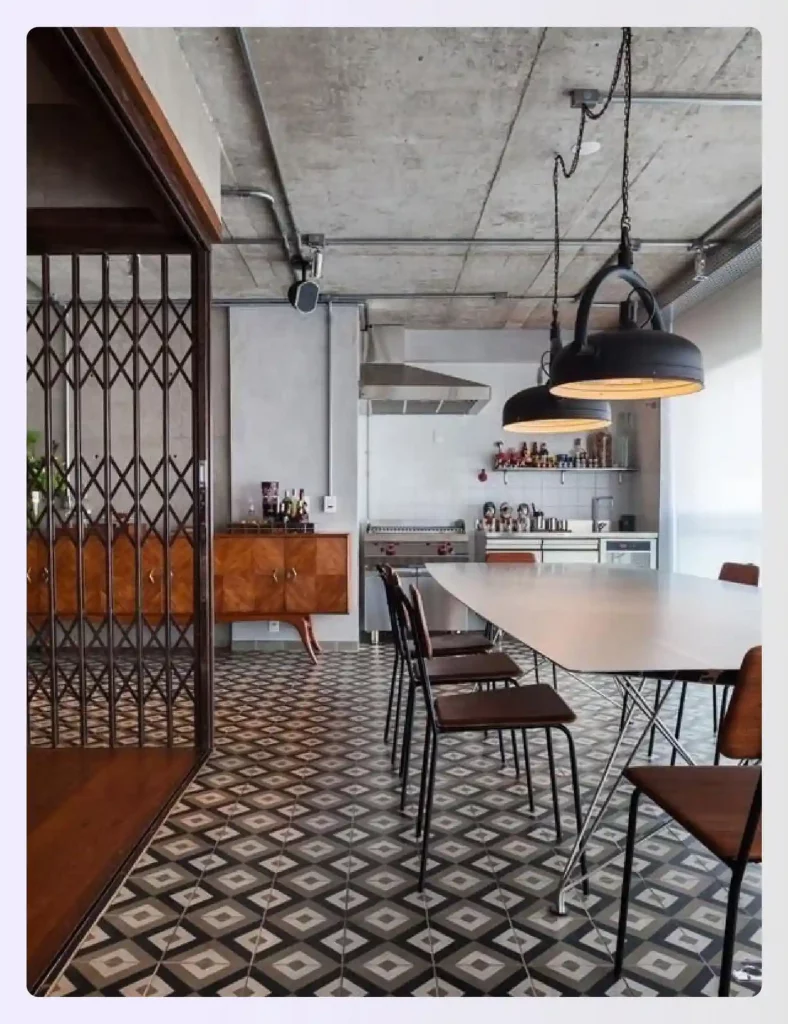
Image Credit: pinterest.com
5. Let the Light in with Loft-Style Windows
Large, uncovered windows are a hallmark of the industrial aesthetic, designed to flood the interior with natural light. Typically featuring metal frames in black, these windows act as a powerful design feature. Their expansive size enhances the sense of openness and illuminates the raw textures of wood, concrete, and brick.
To maximize their impact, avoid heavy drapery, which can obstruct light and detract from the clean, structural lines of the window frames. Embracing large windows is one of the most effective modern industrial interior design ideas for creating an authentic, light-filled, and airy environment.
Read also – 8 Best Window Treatment Ideas
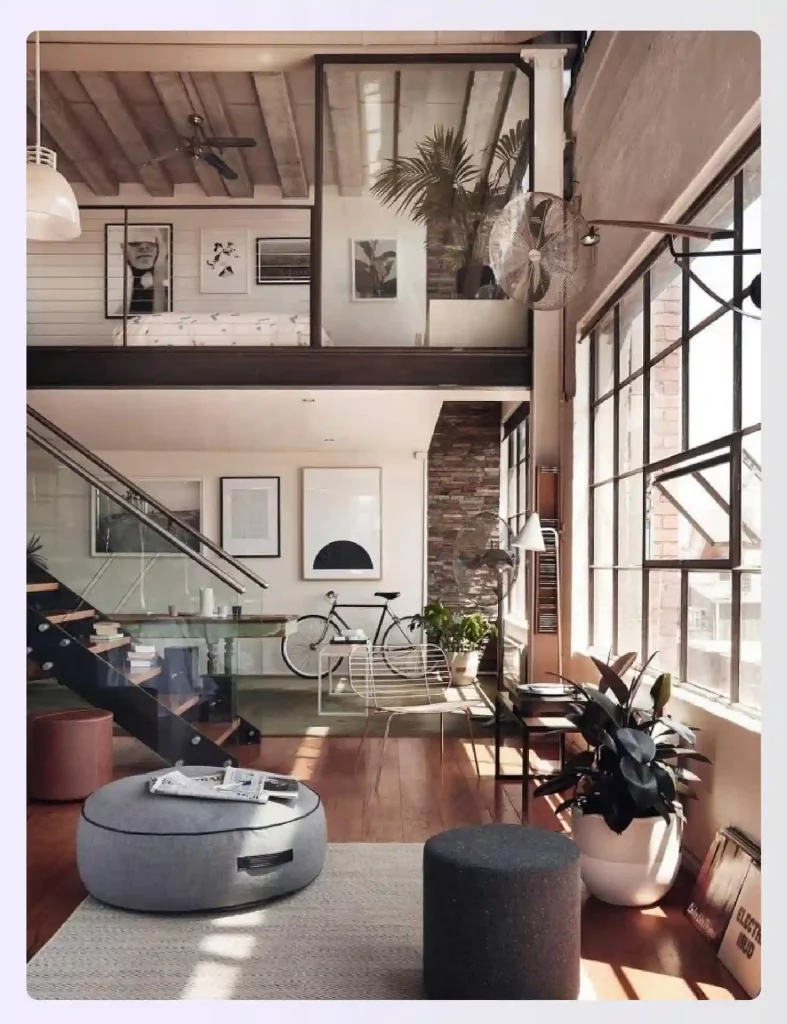
Image Credit: bloglovin.com
6. Soften the Edges with Greenery
While industrial design celebrates hard surfaces, incorporating greenery is essential for adding balance and life to the space. Plants provide an organic contrast to the coldness of metal and concrete, softening the style’s hard edges and preventing the room from feeling too stark. The foliage also introduces a welcome touch of color.
Position large potted plants in corners to add height and visual interest, or place smaller succulents on shelves. Using planters made from concrete, metal, or terracotta will ensure the greenery complements the overarching industrial interior design theme while making the space feel more inviting and vibrant.
Read also – Japanese Interior Design Ideas
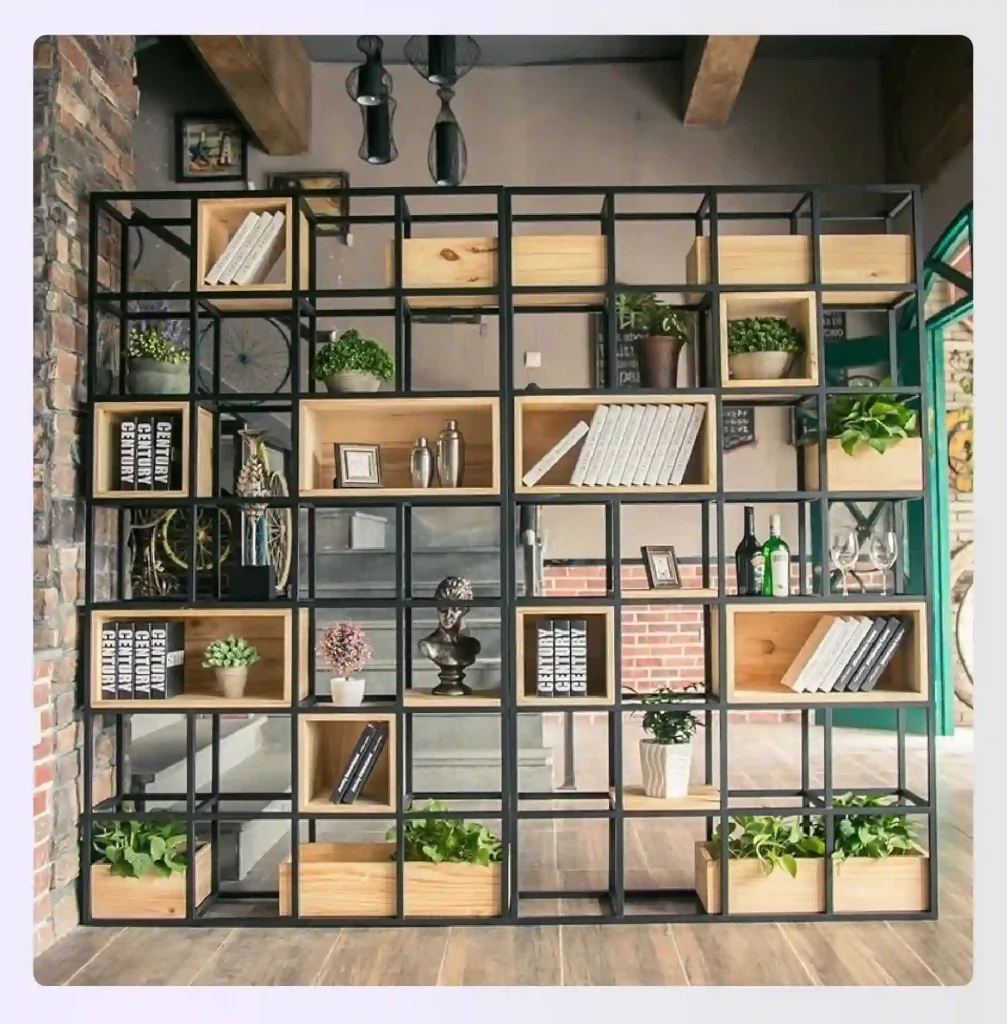
Image Credit: pinterest.com
7. Introduce a Variety of Metal Finishes
Metal is an indispensable material in industrial design. While matte black steel is a classic choice, incorporating a variety of other finishes adds depth and visual interest. Mix different types, from weathered wrought iron and brushed nickel to polished chrome or warm brass and copper accents for a layered look.
Each finish contributes a different feel; polished metals offer a sleek, modern touch, while aged metals provide a vintage character. This thoughtful use of mixed metals is one of the core industrial interior design ideas, allowing you to create a dynamic look that feels both cohesive and intentionally designed.
Read also – 18 Ways To Integrate Japandi Interior Design Style Into Your Home
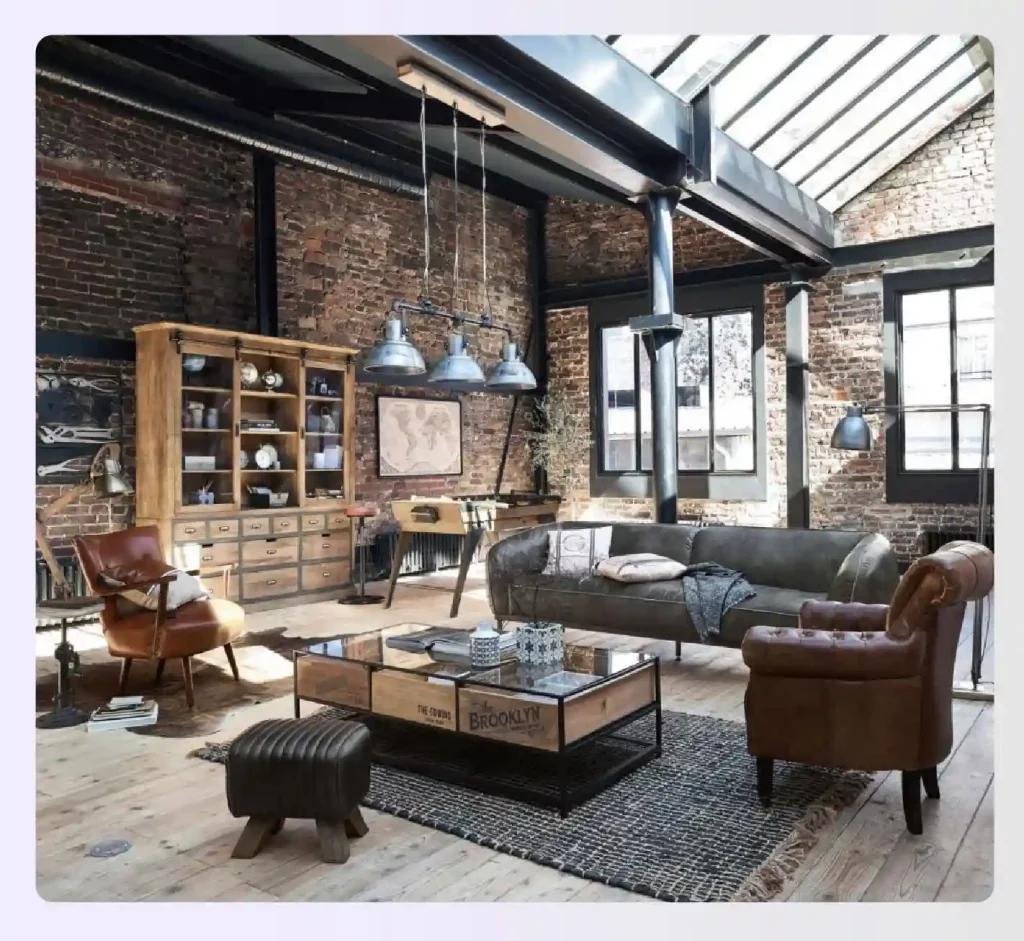
Image Credit: thedesignsheppard.com
8. Showcase the Building’s Skeleton
Authentic industrial modern interior design is about honesty in materials and structure. Instead of concealing architectural elements, this style celebrates them as focal points. Exposed brick walls, with their inherent imperfections, add immense texture, while raw concrete surfaces provide a minimalist and utilitarian foundation.
Beyond walls and floors, look for opportunities to reveal other structural “bones” like exposed ceiling beams, undisguised pipes, and ventilation ductwork. Leaving these elements in their raw state transforms them from functional necessities into powerful design features that honor the building’s history and create a character-rich interior.
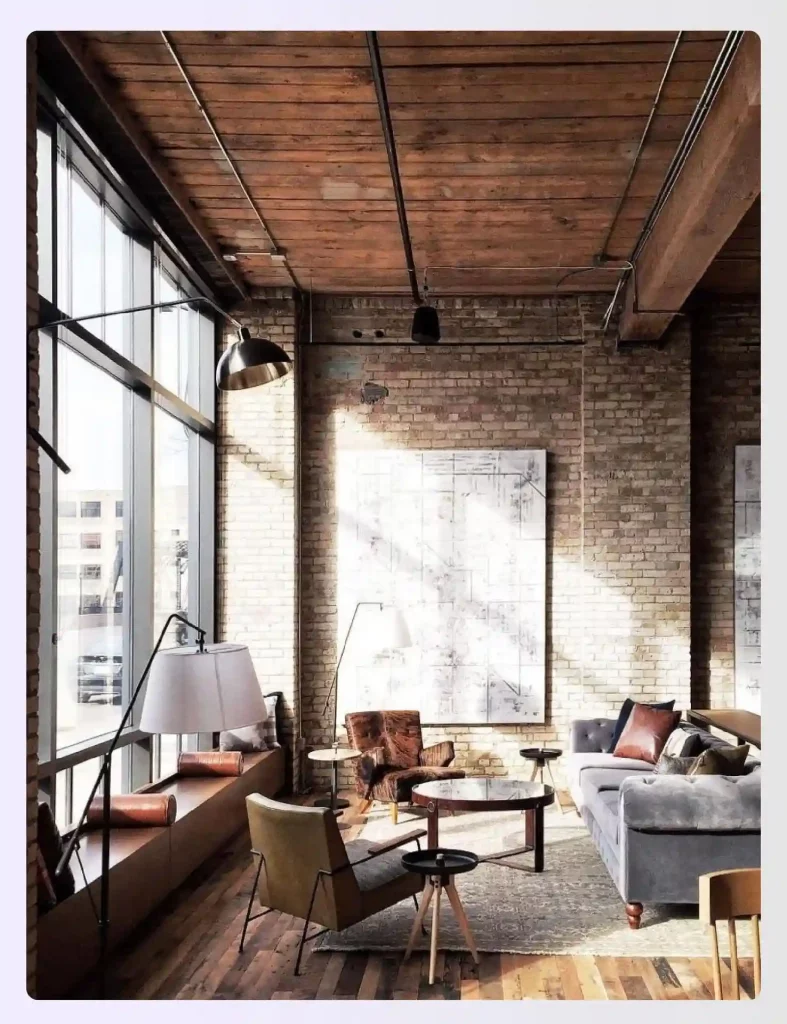
Image Credit: man-man.nl
9. Get Creative with Faux Elements
For homes not built with industrial features, faux elements offer a practical way to achieve the desired aesthetic without major structural changes. Modern materials can convincingly replicate the look of authentic industrial surfaces. Faux brick wall panels or high-quality wallpaper, for instance, can create a textured, rustic backdrop.
A concrete effect can be achieved with specialized paint or plaster finishes on walls and floors. Lightweight, decorative wooden beams can also be installed on ceilings to mimic a converted loft. These creative solutions are excellent modern industrial interior design ideas for infusing any space with raw, magnetic charm.
Read also – 9 Ways To Incorporate Modern Interior Design Style In Your Home
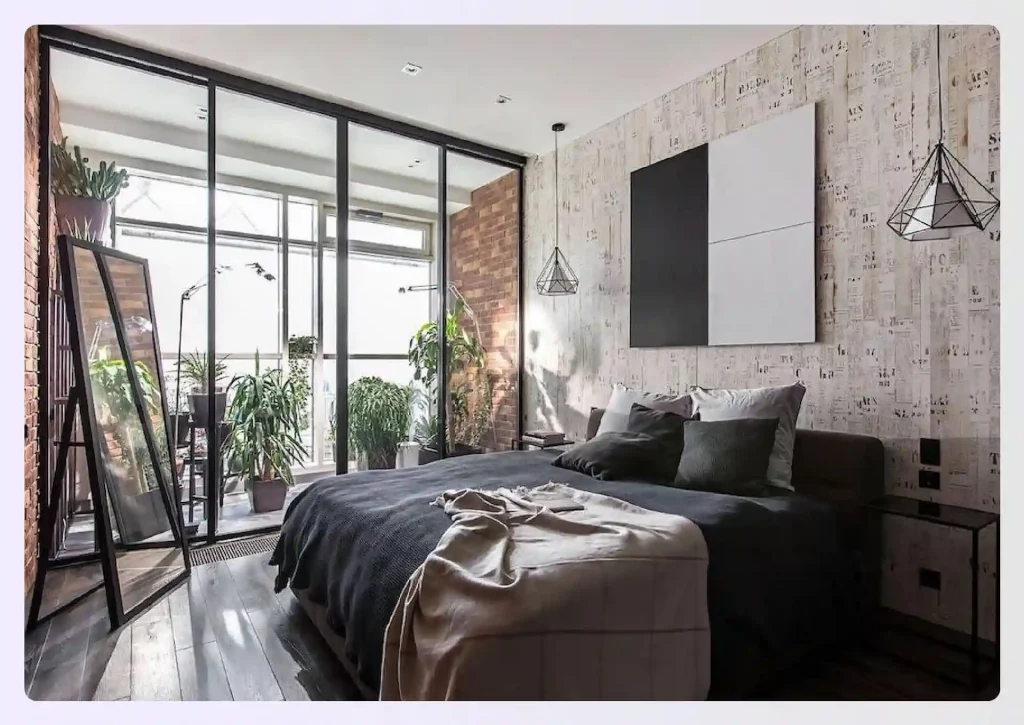
Image Credit: curatedinterior.com
10. Turn Vents and Ducts into Features
In conventional design, elements like ventilation ducts are hidden. In industrial interior design, these functional components are brought into the open and treated as intentional design features. Exposed, round metal ductwork running across a high ceiling immediately evokes the factory aesthetic and adds a layer of raw, mechanical detail.
This ductwork should be integrated into your design plan. You can leave it in its original galvanized steel finish for a classic look or paint it matte black to create a bold, graphic contrast against a lighter ceiling. Highlighting these utilitarian systems is a hallmark of authentic industrial spaces.
Read also – 16 Ways To Add Shabby Chic Interior Design Style To Your Home
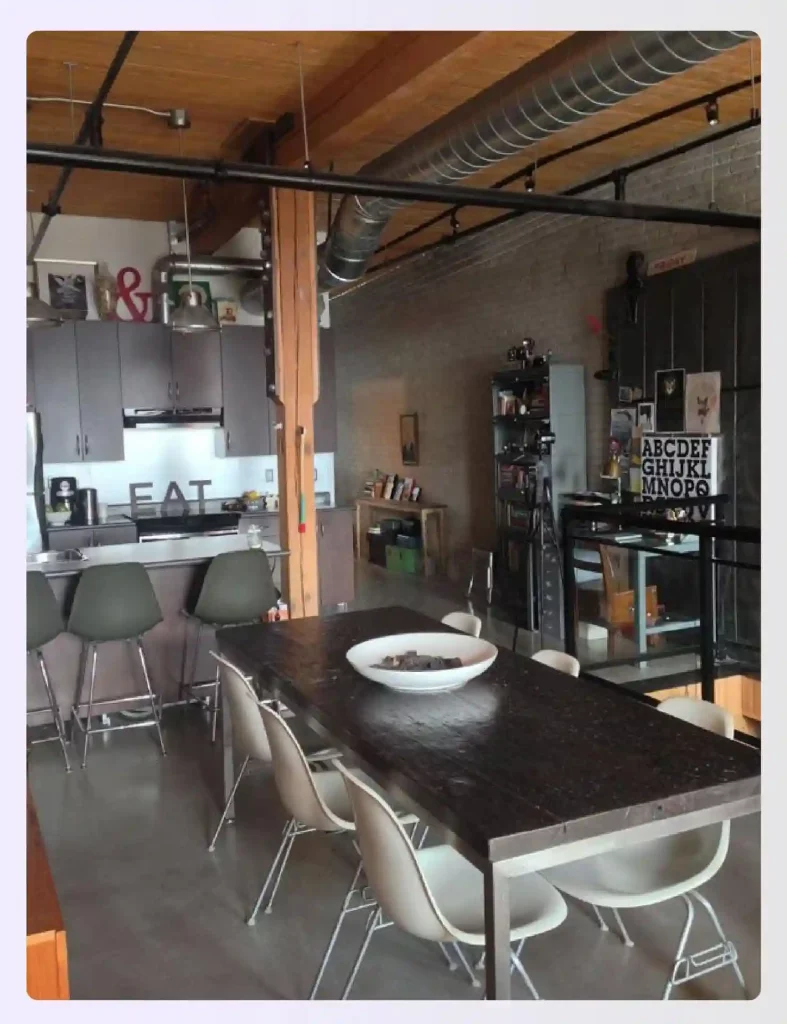
Image Credit: pinterest.com
11. Personalize with Art and Finishing Touches
While industrial design is rooted in minimalism, the final layers of art and decor are what make the space feel personal and complete. These finishing touches soften the raw surfaces and prevent the interior from feeling cold. Consider a large, abstract painting or black-and-white photographs to create a focal point.
Beyond wall art, textiles play a key role. A soft, textured area rug adds warmth underfoot, while plush cushions and throws on a leather sofa introduce comfort. These curated additions are vital modern industrial interior design ideas that infuse your personality into the space, transforming it into a true home.
Read also – 15 Ways To Add Coastal Interior Design Style To Your Home
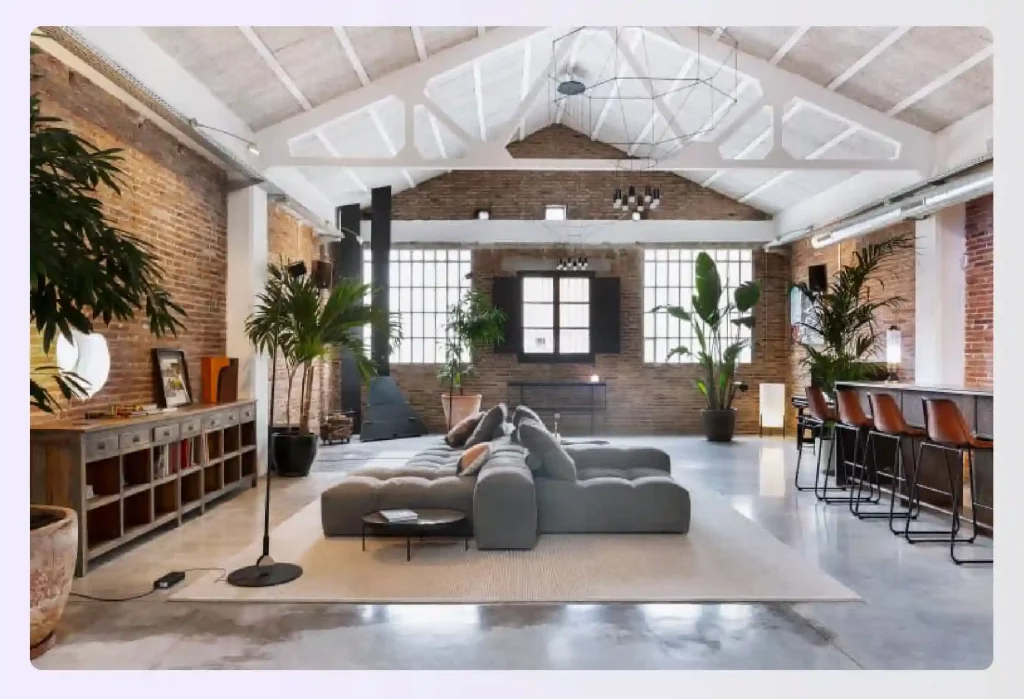
Image Credit: apartmenttherapy.com
12. Build from the Ground Up with Statement Floors
Flooring is a dominant architectural element that establishes the foundation for the entire industrial aesthetic. Polished concrete is a classic choice, offering a seamless, durable surface that captures the style’s raw, utilitarian look. The natural imperfections in concrete add a layer of authentic texture that is both minimalist and interesting.
If concrete feels too cold, distressed or wide-plank hardwood floors are an excellent alternative that adds warmth and rustic character. The key is to choose materials that look robust and resilient. Focusing on the floor is a critical step in creating a cohesive industrial interior design scheme.
Read also – A Guide To Art Deco Interior Design Style for Your Home
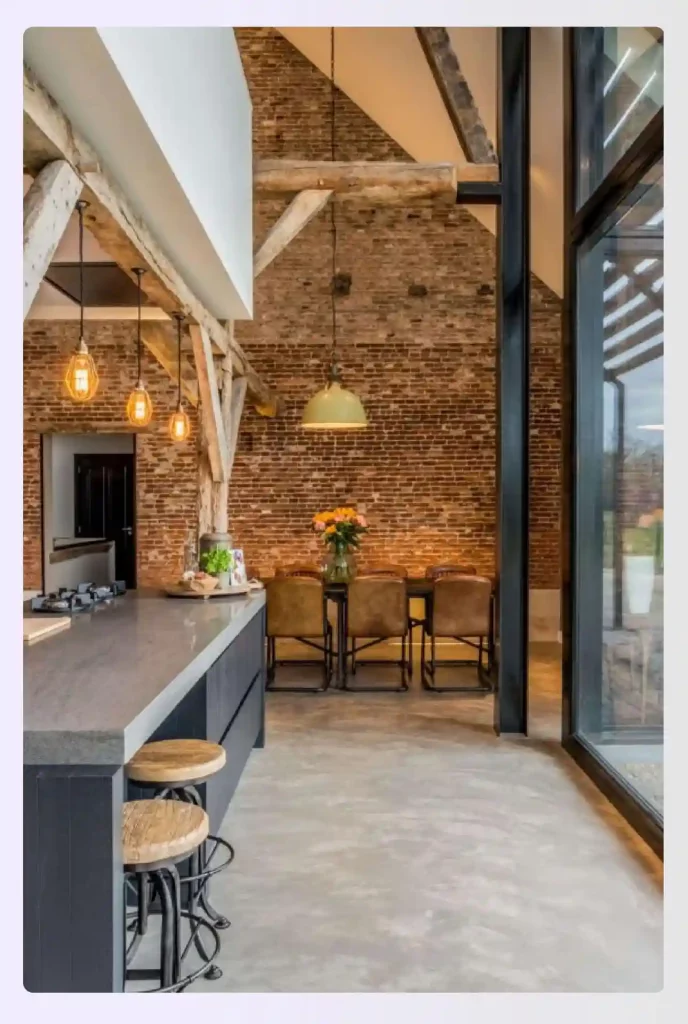
Image Credit: pinterest.com
13. Add Warmth with Repurposed Wood
Reclaimed or repurposed wood is a key material for adding warmth, texture, and a sense of history to an industrial space. Its natural knots and weathered imperfections provide a beautiful organic contrast to colder materials like metal and concrete. Incorporating reclaimed wood also aligns with the style’s ethos of sustainability.
Use salvaged wood to create a statement dining table, open shelving, or a feature wall clad in distressed planks. These industrial style interior design ideas not only add visual warmth but also introduce a tactile quality and rustic charm that makes the space feel more inviting.
Read also – 12 Ways To Incorporate Wabi-Sabi Interior Design in Your Home
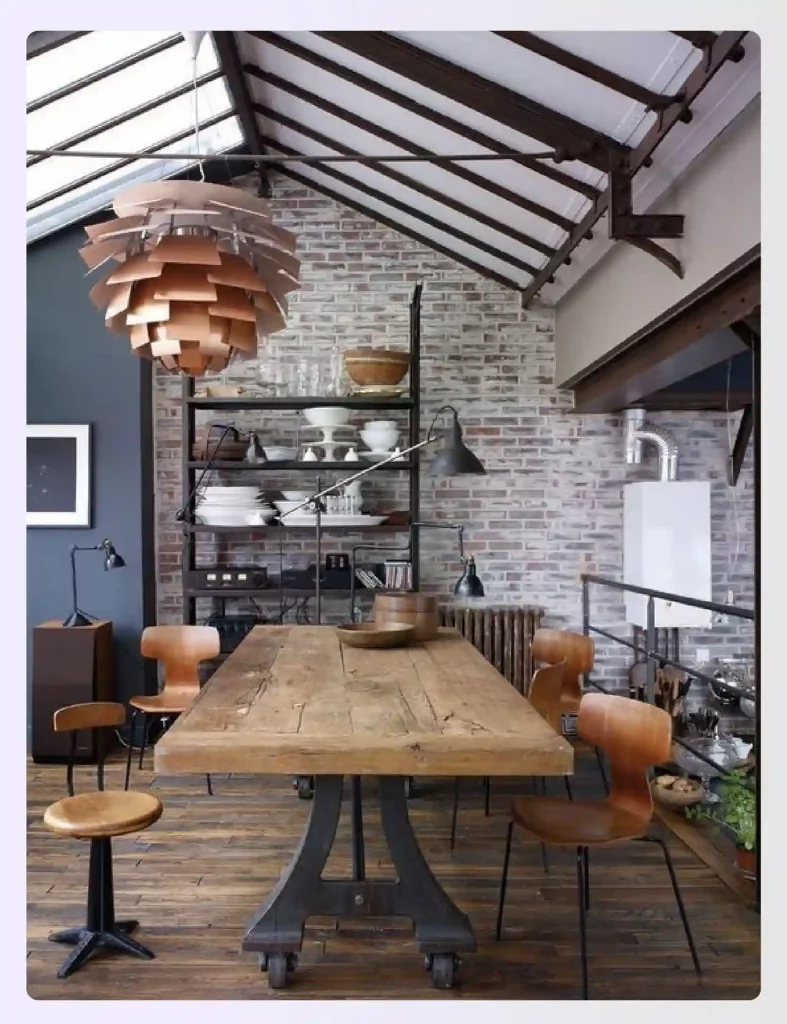
Image Credit: curatedinterior.com
14. Keep it Tidy with Smart Storage Solutions
The clean, uncluttered nature of industrial design requires thoughtful storage solutions. Because this style favors open spaces, clutter can quickly detract from the minimalist aesthetic. It is crucial to integrate storage that is both functional and complementary to the overall design theme.
Consider open shelving units made from black metal and reclaimed wood for organized displays. Vintage metal lockers or wire baskets can also serve as unique storage options. Implementing smart storage is one of the most practical modern industrial interior design ideas for maintaining the style’s signature clean and spacious feel.
Read also – 18 Ways To Incorporate Biophilic Interior Design into Your Home
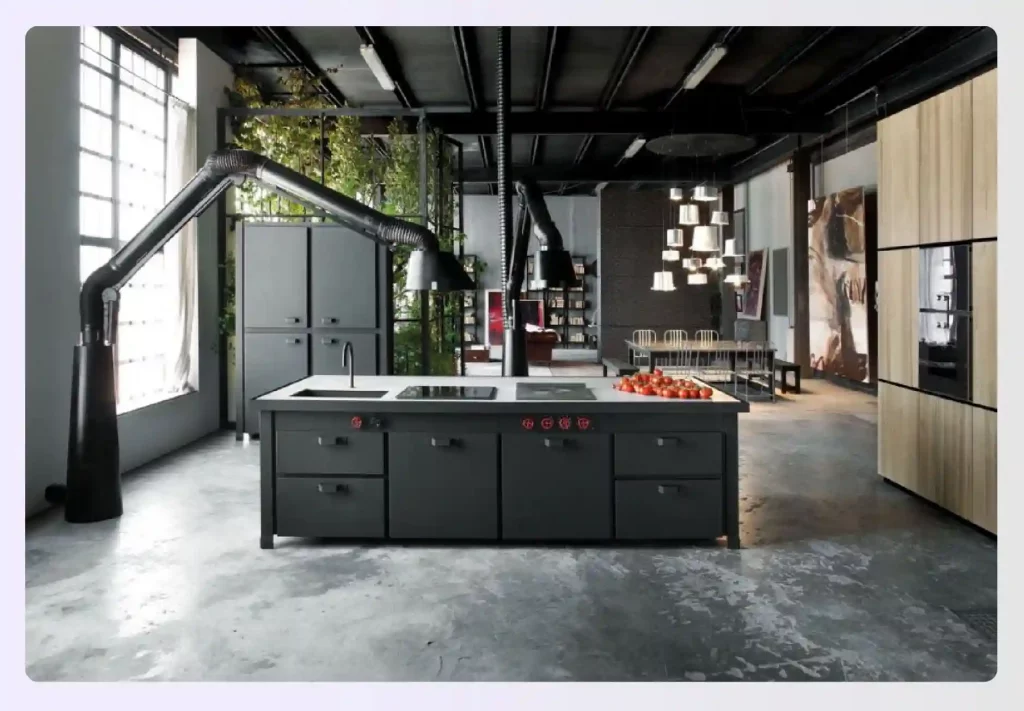
Image Credit: egwtrade.com
Industrial Design Ideas for Every Room
When applying industrial design principles to different rooms, it is important to adapt the style to each space’s function while maintaining a cohesive look. Here are some key modern industrial interior design ideas for every area of your home.
Living Room
- Balance Textures: Create a tactile and inviting space by pairing a key piece, like a distressed leather sofa, with a soft rug. This balances rough and soft textures for a comfortable foundation.
- Select a Statement Coffee Table: Introduce a repurposed item, such as a vintage factory cart or an old trunk, as a centerpiece. This adds historic character and serves as a unique, functional anchor for seating.
- Personalize with a Gallery Wall: Curate a collection of art in large, monochromatic frames to complement the neutral scheme. This gallery wall adds a sophisticated, personal touch and enhances the room’s visual flow.
- Introduce Natural Elements: Soften the room’s hard edges and add life by placing lush plants in minimalist concrete or metal planters. This provides great industrial interior design inspiration while adding a vital organic element.
Kitchen and Dining Area
- Combine Metal and Wood: Pair sleek stainless steel appliances and fixtures with the warmth of reclaimed wood countertops. This combination of metal and wood creates a balanced, classic look that defines the industrial kitchen.
- Incorporate Metal Accents: Add character with industrial-style metal barstools, dark cabinet hardware, or bold black-front cabinets. These accents enhance the utilitarian aesthetic and add a strong, graphic quality to the space.
- Install Statement Lighting: Hang a row of large, open-shade metal pendant lights over the kitchen island or dining table. This creates an impactful focal point and provides essential task lighting for the area.
- Choose Durable Flooring: Consider polished concrete floors for a durable and minimalist foundation. This is central to many industrial style interior design ideas, offering authenticity and performance in a high-traffic area.
Bedroom
- Start with a Minimalist Bed Frame: Select a simple, low-profile bed frame made of black metal or solid wood. This minimalist piece establishes the industrial aesthetic without overwhelming the sense of calm in the room.
- Create a Cozy Contrast: Balance the room’s hard edges by layering plush textiles. Use soft linen bedding, a textured throw, or an oversized armchair to add essential warmth, comfort, and a luxurious contrast.
- Utilize Open Storage: Install open metal-and-wood shelving or a simple, open-style wardrobe. This approach provides functional, factory-inspired storage while maintaining an airy, uncluttered feel that is true to the style.
- Add a Modern Wall Treatment: If you have an exposed brick wall, consider painting it white or a dark, moody color. This gives the industrial modern interior design a fresh, contemporary twist while preserving texture.
Bathroom
- Pair Raw and Luxurious Elements: Balance a raw concrete or exposed brick wall with sleek, modern fixtures. Pair these textures with a minimalist white tub and a frameless glass shower enclosure for a sophisticated contrast.
- Add a Wooden Vanity: Introduce a polished or rustic wooden vanity to add natural warmth and texture. This organic element contrasts beautifully with the cool-toned materials like concrete, metal, and tile in the space.
- Use Simple, Effective Lighting: Complete the look with simple, vintage-inspired lighting. Install clean-lined, metal wall-mounted sconces or suspend a single bare Edison bulb from the ceiling for a dramatic and functional effect.
Common Mistakes to Avoid When Designing Your Industrial Space
When implementing modern industrial interior design ideas, watch out for these common pitfalls:
- Going Too Cold: Industrial spaces can sometimes feel stark. Balance hard surfaces with warm woods, soft textiles, and plenty of lighting to prevent a sterile atmosphere.
- Cluttering the Open Space: The beauty of industrial interior design lies in its spaciousness. Avoid over-furnishing or accumulating too much decor, which can make the room feel small and messy.
- Ignoring Comfort: Don’t sacrifice comfort for style. Ensure your seating is plush, and your lighting is layered for different moods, making the space livable.
- Lack of Personality: While the style has a strong identity, ensure you infuse your own personality through art, unique finds, and personal touches to make it feel like home, not a showroom.
Foyr: Your All-In-One Interior Design Software to Visualize Industrial Design Ideas
When bringing modern industrial interior design ideas to life, visualization is key. Foyr Neo provides the perfect platform for designers and homeowners alike to experiment with this versatile style:
- Experiment with Materials Risk-Free: Curious about a concrete floor but scared of the commitment? Want to see if a faux brick accent wall will look authentic? With Foyr, you can drag and drop thousands of textures and materials onto your walls and floors, instantly visualizing the effect without touching a paintbrush.
- Perfect Your Open-Concept Layout: Arranging furniture in a large, open space is a common challenge. As a comprehensive interior design software, Foyr allows you to play with different furniture layouts, create defined “zones” for living and dining, and ensure there’s a natural flow through the room—all with a few clicks.
- Get the Lighting Just Right: Lighting is crucial for setting the industrial mood. You can place different styles of pendant lights, track lighting, and floor lamps in your 3D model to see how they illuminate the space and contribute to the overall ambiance.
- Nail the Color Palette: Test out those signature industrial shades of charcoal, gray, and warm browns on your virtual walls. See how they interact with the light from your windows at different times of day, ensuring you create a space that feels cozy and sophisticated, not cold and cave-like.
Ready to bring your industrial design ideas to life? Experiment with materials, layouts, and lighting in stunning 3D. Sign up for Foyr’s 14-day free trial and start designing your perfect space today.
Frequently Asked Questions
1. Is industrial style still popular?
Yes, industrial style remains highly popular in 2025. The timeless appeal of raw materials, functional design, and architectural honesty remains a constant draw for homeowners seeking authentic spaces. Modern interpretations have evolved to include softer elements and technology integration while maintaining the style’s core industrial characteristics.
2. What is the difference between boho and industrial?
Boho style embodies color, pattern, and eclectic global influences, whereas industrial design emphasizes neutral tones, raw materials, and utilitarian elements. Boho creates warm, layered spaces through textiles and plants, whereas industrial design emphasizes structural elements and minimalist functionality with architectural honesty.
3. What is the main focus of industrial design?
The primary focus of industrial interior design is highlighting architectural elements and raw materials that would typically be concealed. The style celebrates exposed brick, concrete, ductwork, and structural components while emphasizing functional, minimalist furniture and open spaces inspired by converted factory lofts.
4. Where can I get interior inspiration?
Foyr provides exceptional inspiration for industrial interiors through its visualization platform. You can experiment with different industrial elements, materials, and layouts in a realistic 3D environment. The software allows you to test various design choices before implementation, ensuring your industrial space achieves the perfect balance.
5. What is the 3-5-7 rule in interior design?
The 3-5-7 rule guides color use in interior design: choose 3 primary colors for your palette, incorporate 5 forms of pattern or texture, and limit accessories to 7 items per space. In industrial design, this translates to 3 neutral tones (like black, gray, wood), 5 material textures (concrete, metal, brick, leather, wood), and 7 carefully selected accessories.



